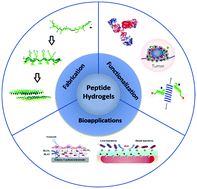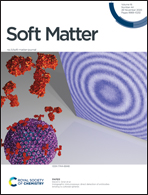Recent advances in the fabrication, functionalization, and bioapplications of peptide hydrogels
Abstract
Self-assembled peptide-based nanomaterials have exhibited wide application potential in the fields of materials science, nanodevices, biomedicine, tissue engineering, biosensors, energy storage, environmental science, and others. Due to their porous structure, strong mechanical stability, high biocompatibility, and easy functionalization, three-dimensional self-assembled peptide hydrogels revealed promising potential in bio-related applications. To present the advances in this interesting topic, we present a review on the synthesis and functionalization of peptide hydrogels, as well as their applications in drug delivery, antibacterial materials, cell culture, biomineralization, bone tissue engineering, and biosensors. Specifically, we focus on the fabrication methods of peptide hydrogels through physical, chemical, and biological stimulations. In addition, the functional design of peptide hydrogels by incorporation with polymers, DNA, protein, nanoparticles, and carbon materials is introduced and discussed in detail. It is expected that this work will be helpful not only for the design and synthesis of various peptide-based nanostructures and nanomaterials, but also for the structural and functional tailoring of peptide-based nanomaterials to meet specific demands.

- This article is part of the themed collection: Peptide Soft Materials


 Please wait while we load your content...
Please wait while we load your content...